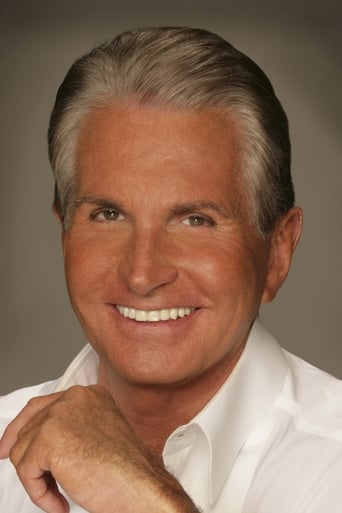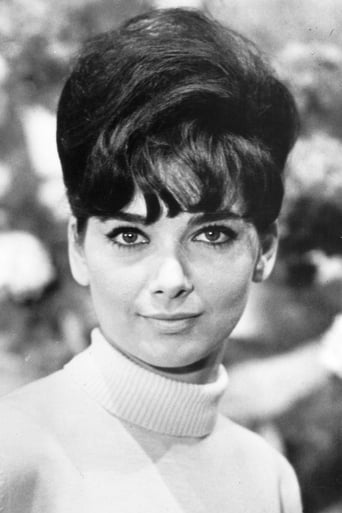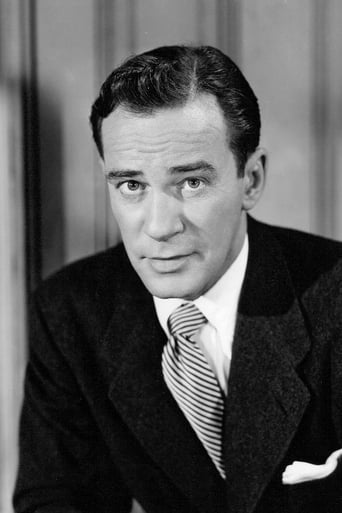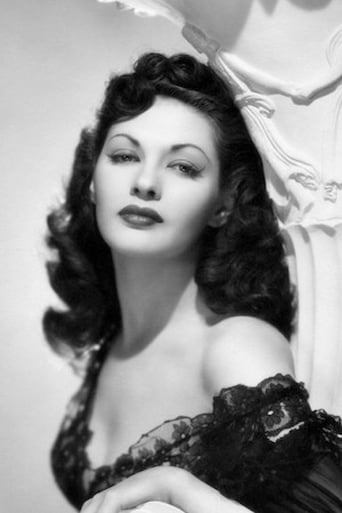Hellen
I like the storyline of this show,it attract me so much
ShangLuda
Admirable film.
Stoutor
It's not great by any means, but it's a pretty good movie that didn't leave me filled with regret for investing time in it.
Kinley
This movie feels like it was made purely to piss off people who want good shows
ferbs54
Between the two of them, director Byron Haskin and producer/director George Pal had previously been responsible for such marvelous sci-fi/fantasy films as "From the Earth to the Moon," "Robinson Crusoe on Mars," "Destination Moon," "When Worlds Collide," "The War of the Worlds," "The Time Machine" and "The 7 Faces of Dr. Lao"; working as a team, they had put together the highly regarded "Conquest of Space" AND "The Naked Jungle." Thus, inevitably, expectations must have been high when these two formidable filmmakers teamed up once again in the late '60s for their final project together. That film, released in February '68, was "The Power," a sci-fi thriller that, if not quite on a par with any of those preceding films, at least had the benefit of a terrific cast to put over its central conceit. Loosely based on Frank M. Robinson's novel of 1956, the film can almost be seen as a warm-up of sorts for the superior "Scanners" outing of 13 years later. In "The Power," we are given a tour of a government research center in San Marino, CA that is testing the limits of human endurance as part of the U.S. government's astronaut program. When federal overseer Nordlund (Michael Rennie) visits the installation, it is revealed by Dr. Henry Hallson (Arthur O'Connell) that he had recently given intelligence and aptitude tests to several key members of the research team, and that the tests had revealed that one of them is a supergenius, capable of telekinetic and other superhuman mental powers. Unfortunately, we are also asked to believe that Hallson does not know who the superbrain might be; apparently, these test results do not include the names of the people taking them! (Is it to be believed that these head scientists took their tests anonymously?!?!) Before long, though, that superbrain strikes, killing Dr. Hallson via long-distance strangulation AND by placing him in an out-of-control centrifuge. Dr. Jim Tanner (George Hamilton), one of the other scientists on the project, is immediately suspected of the crime by the police, as all his education and employment records at the installation have somehow gone missing. Thus, Tanner takes off, both to keep out of the authorities' clutches, and to discover just who the malicious mutant brain might be, as other members of the project are killed off, one by one, "Ten Little Indians" style. As mentioned, if "The Power" has one saving grace going for it, it is its truly excellent cast of old pros, who all seem to be enjoying themselves here. Besides the others already mentioned, we have Suzanne Pleshette (who has rarely looked more beautiful), Richard Carlson, Earl Holliman and Nehemiah Persoff as other project scientists, and ergo fellow suspects; Gary Merrill as the chief cop on the case; Yvonne de Carlo as Hallson's widow; Aldo Ray as a murderous garage mechanic; Barbara Nichols as a floozy waitress; "Star Trek" alumni Lawrence Montaigne (as another cop) and Celia Lovsky (wasted in a nonspeaking role); stripper Beverly Hills, here playing a drunken stripper at a wild party; "Sayonara"'s Miiko Taka as the Carlson character's wife; and, uncredited, Forrest J. Ackerman as a hotel clerk. The film offers up any number of mildly exciting sequences, including Ray's attempt at killing Dr. Tanner on an Air Force gunnery range; the mentally incapacitated Tanner attempting to drive his car and then plunging into a river; and the mentally controlled Holliman character being compelled to engage in a shoot-out with the police. Still, the film could surely have used some more good scenes such as these. Director Haskin, who had so impressed me in any number of bizarre episodes of "The Outer Limits," also manages to insert several trippy, borderline psychedelic moments into his film, such as when Tanner witnesses eerie phenomena at an amusement park, and when he engages in a mental battle of wills with the culprit toward the film's end. Perhaps most memorable here, though, is the film's score by Miklos Rosza, composed on the Eastern European instrument known as a cimbalom, a sort of hammered-dulcimer contraption with a distinctly exotic tone. That is the good news. Unfortunately, "The Power" somehow feels more like a TV film than a theatrical presentation, its FX are never all that impressive, the central red herring that it presents to confuse Tanner (and the viewer) is ultimately a bit too successful for full clarity, and the picture's final denouement is--for this viewer anyway--an unsatisfying one. The film is certainly entertaining enough, but one senses that it could have been much more; that here was an opportunity somehow squandered. Though little discussed today, the film enjoys a positive word of mouth among certain circles, and I suppose that its current good reputation might in part be due to the patina of nostalgia that many have for it, from seeing it as a kid way back when. Today, the film manages to get the job done, but just barely. So thank goodness for Suzanne Pleshette's participation in it! For this viewer, at least, her exquisite presence always helps any entertainment go down more smoothly....
johcafra
--psychokinesis, of which TK is a manifestation. Very well, I quibble...I can't quite call this film a guilty pleasure. I review only because it made an impression on me when first broadcast Stateside in prime time, making me feel obliged nearly 40 years later to view it uncut and without commercial interruption when the opportunity arose.It has not aged well at all. It has a Sixties look that tries only a little to not look Sixties, given it opens with the title-card reminder that it happens "Tomorrow." It plods...and plods...until the action, which at times...plods. And when it stays perfectly still to lend itself to exposition it can't quite decide if it wants to be a character study as the characters ponder the core Imponderable: What to do when a superman-in-hiding wants YOU.That's not a fair statement about George Pal and Byron Haskin, who were not known for their subtlety and full well knew how to exploit the magic medium. I can't even blame the casting or acting. I can only blame the attempt to adapt a nearly unfilmable novel. If you want to imagine what Pal and the rest likely wanted to do, read the novel, though be sure it's the original edition (ca. 1956) and not the author's later revision.And though I agree with other users that this film predated many other (and some worse) treatments of "The Power" (Terrestrial Edition) put to not-so-nice use, it is not the first cinematic treatment. Treat yourself to The Man Who Could Work Miracles and both the Village AND Children of the Damned. Throw in Forbidden Planet for contrast...So why did I feel obliged after all these years to view it again? One of Miklos Rozsa's finest musical scores, guaranteed to make you reach for sweet paprika and a recording of Kodaly's Hary Janos Suite. Arthur O'Connell making a funny face. Nehemiah Persoff's chain-smoking and novel use of a dishwasher. Earl Holliman trying just a little too hard to overcome the dialogue. George Hamilton trying not hard enough to look harried but succeeding only when he makes a puss. Suzanne Pleshette and Yvonne De Carlo...well, given the chance the ladies could act too.And all-too-brief homages to Pal's Oscar-winning Puppetoonery with the truly inspired artistry of Wah Ming Chang and William Tuttle in one of the very few films that make you want less exposition and more magic.
longhair-7
I rate this film as excellent, simply because it is so unique as science fiction goes. While particulars such as telekinesis are not in themselves very unique to the genre (and can often be trite and silly), when combined with the central theme of fear, is VERY unique. I cannot think of a single movie, regardless of its classification, that so powerfully and directly deals with the psychological reality of fear - and its destructive effect - as this film does.Of course, if the cast and director had failed to weave this central element of FEAR into the movie skillfully, then it could have easily been a silly forgettable film, or perhaps a not-so-forgettable, hilarious "bomb," remembered fondly and eternally only for being campy. Fortunately, the latter case was not realized, but instead an all-time classic science fiction piece that is remarkable for its singularity.I must also say that despite George Hamilton's reputation for being somewhat of a "ham," I thought he really did well in this, and in fact it is - for me - one of his most memorable roles.George Pal does his magic perfectly (and appropriately) in this movie (such as at the end, when Tanner (Hamilton) and Arthur Nordlund (Michael Rennie) are intimately involved in a surreal, powerful, metaphysical struggle. If you want to see FEAR represented symbolically in its quintessence - and at its most primordial - and represented in graphic form, then Pal's special effects in this scene bring it to life as it has never been done in cinema. It is not a cliché (for me, anyway . . .) to say that this final scene is truly "gripping" in its intensity. In addition, Michael Rennie is just PERFECT as the embodiment of all that is dark, powerful and "satanic." He makes a very Jungian symbol of evil here! I also thought Suzanne Pleshette performed quite well in this as the lead supporting actress.As in another underrated science fiction film of the era, "Colussus: The Forbin Project," one of the delights in seeing this film is its depiction of the optimistic pro-technical, pro-science attitude that was so pervasive in the sixties. One sees this, for example, in the architecture of the buildings at the beginning, where Tanner and Nordlund and Professor Margery Lansing (Pleshette)(along with some of the other co-stars) work . It gives it an ineffable, yet very concrete futuristic "feel" to the scene - something on the line of "Bucky Fuller meets Military-Industrial-complex." Yet, far from feeling "dark" at this point, one gets a very upbeat vibe from it.Likewise, some of the modern architecture in other buildings, such as a Frank Lloyd Wright-type house at one point, also underscores this feeling.There is one rather obvious goof in the movie, when Tanner is somehow "spotted" by the one of the pilots in some jet aircraft who are practicing at a target range. The possibility that a single man could be spotted by a pilot flying at high speed, and with little view of the ground (and in all likelihood, from a great altitude), is fairly remote, even though possible.There is, however, also a good comic touch sometimes, as when Tanner goes into an empty diner at one point, and the extreme-country twang of the singer's voice playing on the radio in the background will probably make anyone laugh, even lovers of country/western music! All in all, a superb film!
sfoxly
This story was first televised live during the summer of 1956 on one of the high quality drama series that flourished during the 1950's. Perhaps it was The United States Steel Hour. I was an eleven year old kid at the time and was fascinated with the basic plot. I have searched for information about the original teleplay, but have been unsuccessful. Does anyone out there have any info on the TV broadcast of this story?Several years later, I read Frank M. Robinson's novel, from which the two movies were made and enjoyed the 1968 film version. It had a terrific musical score, featuring a zither-like instrument played with felt hammers. George Hamilton did a fine job in the lead role.





